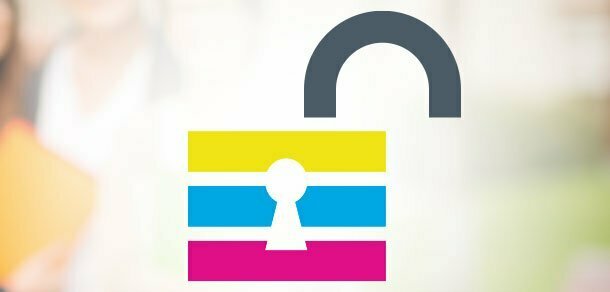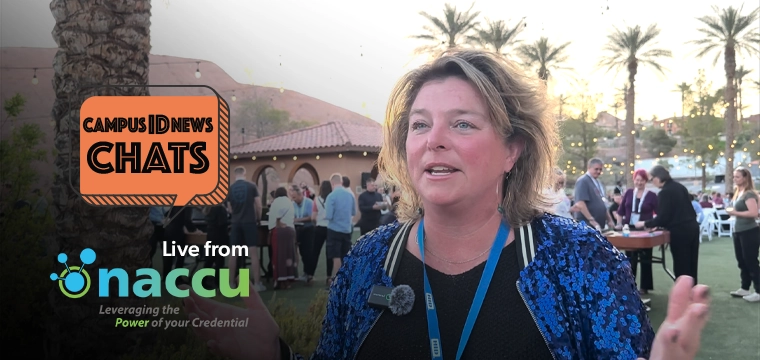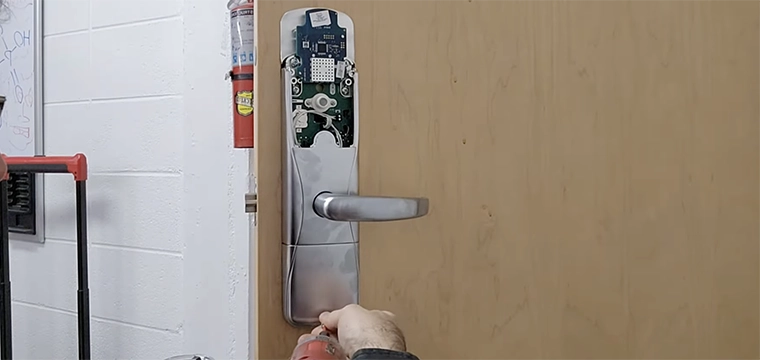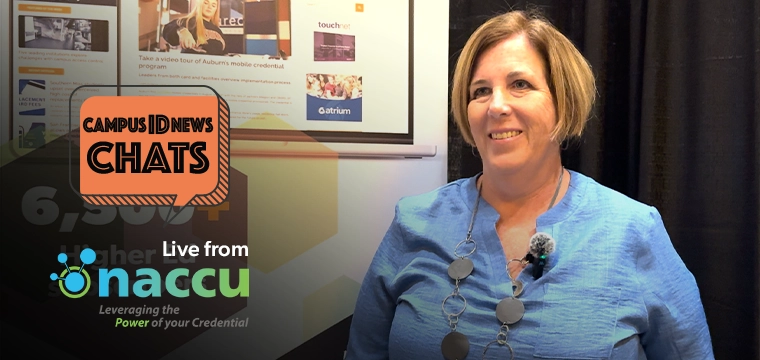
Securing cardstock, ribbons, and printers key to preventing theft and ID fraud
Card offices sit at the core of security on campus. They issue the credentials that control privileges, transactions and access to buildings throughout campus.
For this reason, it is apparent that campus cards are valuable and must be protected. But what is sometimes overlooked is that the raw materials used to create these credentials also need to be secured.
Cardstock, print ribbons and printers themselves are tools of the trade, but in the wrong hands they can lead to the creation of fraudulent student IDs. But how does a card office that must open its doors to serve an entire campus population, secure materials while still ensuring rapid and convenient service?
Simply put, campus card offices need to secure cards, printers and supplies. This limits temptation by passersby, customers or staff to steal blank cards, ribbons or laminates.
In the wrong hands, these materials could certainly create an embarrassing situation for the institution. Fraudulent student IDs could enable an unauthorized individual to gain access to secure areas of campus … or something far worse.
Even if stolen materials aren’t used to falsify student IDs or other identification documents, the card office could still be hit for hundreds, even thousands, of dollars or more in lost property. “Supplies are not cheap and reselling on eBay, or the like, could net a nice profit for the person taking the items,” says Mark Degan, corporate marketing manager for ColorID.
The importance of securing card materials increases if holograms or other security laminates are used in the production of cards or if banking cards are issued from the card office, says Fred Emery, director of OneCard sales at Heartland Campus Solutions. “For this reason, many banks and card brands have very specific guidelines that a campus must adhere to if issuing cards for a banking partnership,” he adds.
When securing card office property, it’s important to know what materials are worth safeguarding. Topping the list – blank cardstock, print ribbons, and for sheer cost alone, the card printer. “It is a good idea to keep proper inventory of these items in addition to keeping them secure,” says Emery.
“If it were my card office, I’d want the all my supplies under some sort of lock-and-key system,” says Degan. “By locking the materials, you eliminate temptation from part-time workers, but I would also add accountability by logging who opens and removes stock from the secured location in a given day.”
Ribbons and cards are the first items a card office should secure in a locking cabinet or safe, says Emery. “Printers can be locked down much like computers and should be kept, at the very least, behind a locked door.”
At Ontario’s Mohawk College, card office personnel have implemented both security and auditing measures to monitor the office’s valuable materials.
“Our ONE Card office secures all our card materials in a locked cabinet, and only a few people have access,” says Rob Morrallee, ONE Card administrator at Mohawk College.
Mohawk secures its blank cards, printer ribbons, lost cards and miscellaneous issuance items. The university also has a number of tablets that the office uses secured in a locked cabinet.
If a campus card office thinks there is a security problem, running out in a panic and buying expensive security equipment isn’t necessarily the answer.
As a start, pick out the card office’s weakest link, so to speak. Where in the office’s process is someone most likely to steal a card – blank or printed – a print ribbon or printer? Use that as a staring point and fill the gaps with either procedural changes like audit trails and inventory tracking or new security measures like safes or lockers.
Proper checks and balances are also important. Personnel management is a large part of office security, so if your card office manager holds the only key to the vault, it’s important to have a contingency plan. What happens if the card office manager is out sick? Who then holds the key?
Security often comes at the expense of convenience, but it’s a tradeoff that should be worth making. If it takes a little extra time each day to properly lock up card office’s materials, then take the time. It will be worth it if the alternative is being hit for thousands of dollars in lost property or having to answer difficult questions when the fake ID trail leads back to the card office door.
“Encoded cards are the most important item that we keep locked up as these cards have access to the students account and may contain funds that have been loaded to their account,” he says. “These can be both lost cards and cards that have not yet been picked up by students or staff members.”
Mohawk’s card office utilizes the equipment sign-out module that comes with the Heartland OneCard program, says Morrallee. “This helps us to keep track of our inventory.”
Security is the job of all those involved in the production of the card, and all staff should be concerned that procedures are being followed and items are kept secured, explains Emery.
But every team needs a leader when it comes to security and that is the role of the ID card office manager. “They are best suited for implementing a system that works for their team. In situations where there isn’t an card office manager, though, I’d rely on IT or security personnel to construct a plan,” says Degan.
For Minnesota’s St. Cloud State University, card office security is primarily the responsibility of the office director. One of its drivers for securing card materials is the susceptibility of card technology – specifically mag stripe – to be compromised, , says Rory Michaelis, director, Campus Card at St. Cloud State University. “As we all know, mag stripe cards can be easily duplicated.”
The main office door is secured with an access control reader that enables any time access for Michaelis – as the only full time employee in the office – but limits student worker access to business hours only.
St. Cloud State’s materials are stored in a locked filing cabinet, and Michaelis holds the only key. “I control the key, and students log each event when materials are removed from the inventory,” says Michaelis.




